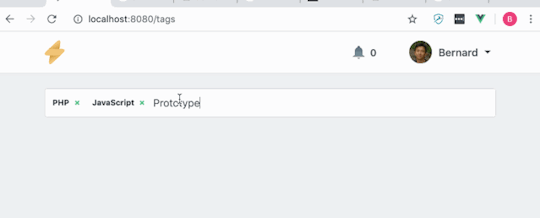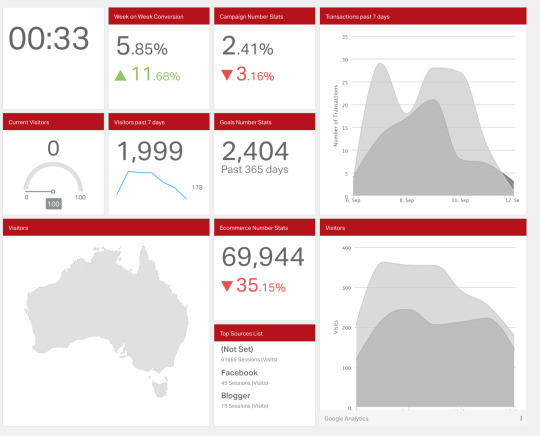A sounding board for ideas, tech I like and projects I work on. Let's connect here Tech Lead @ Webqem Certified Magento Enterprise Developer Plus and Magento 2 Systems and Integration specialist on Software-as-a-Service, Supply Chain and Retail applications.
Don't wanna be here? Send us removal request.
Text
Lace using Pure CSS

https://diana-adrianne.com/purecss-lace/
0 notes
Photo

VueJS
I spent the weekend learning Vue, not out of choice but a sudden urge to solve a problem with incorporating a Voerro Tags input box into Laravel Spark.

Satisfying to have figured out how Laravel, Spark and Vue all work together and also highlighted the power of Vue as a toolkit for future development projects.
Vue https://vuejs.org/
Spark https://spark.laravel.com/
Laravel https://laravel.com/
0 notes
Text
What’s next in APIs: Change Data Capture

Change Data Capture is an important database feature for tracking changes at the transactional level. It enables users or services to retrieve a collection of changes to every table. In cases where records are replicated or synced with services outside of the database, CDC is a useful tool for ensuring data is synced, including when database records are deleted.
In the API worlds CDC is not as well-known. As recent as mid-2018, Salesforce added CDC to its API capability, including a Streaming API where external systems receive push notifications of such change events. There is little or no information on CDC capabilities in any other API I have come across.
CDC for APIs should consider the following types of record changes:
Create
Update
Delete
Undelete
A CDC endpoint should also include the following capabilities:
Filter by Type - API consumer may only watch out for changes to a subset of records in the API
Filter by Date - API consumer may only watch out for changes since last check
Include updated fields / exclude unchanged fields,
Reference to original API endpiont or record, except when original record is deleted
In the case when original record is deleted, include last known version of record data.
A CDC endpoint might look something like this:
{ ‘header’: {
‘change_type’:’CREATE’,
‘entity_type’: ‘CUSTOMER’,
‘entity_id’:925215125,
},
‘data’:{
‘name’ : ‘Acme Industries’,
‘email’: ‘[email protected]’,
‘updated_at’: ‘2019-05-01T00:00:00′
}
}
Final word. As there is no agreed standard for CDC in APIs I hope to start a discussion on CDC on the comments section here. If organisations recognise the importance of an API ecosystem, now is a great time to consider CDC as part of an API implementation.
0 notes
Video
tumblr
Yo Michael! Nice shot from Magento Live 2019 in Sydney Australia. Hope you’re having a blast in Seattle!
0 notes
Text
Dashboard metrics on Raspberry Pi 2

At work, I have started a project to implement dashboard metrics. The project involves pulling real-time performance metrics from client systems and presenting them in a nice dashboard format in the office.
Given its low cost, portability and no frills technology, Raspberry Pi 2 (raspberrypi.org) seems the the perfect option for the project. With an LCD monitor powering an RPI2 unit via USB, the only tethering required is the monitor’s own power. Each monitor / RPI2 module can be easily moved around the office - only a nearby power outlet is required.
The project is off to a good start. The RPI2 unit is running Ubuntu Mate, a light Ubuntu distribution with an X11 interface and pre-installed Firefox browser.
I am using Geckoboard dashboards (www.geckoboard.com). Due to Chromium compatibility issues, Geckoboard warns against using RPI2 for its dashboards, This has in fact turned out to be true, since even the recent Chromium version 41 fails to display Geckoboard properly. However the Ubuntu Firefox browser works well. RPI2 stays.

Geckoboard supports dashboard loops, which means I can setup multiple dashboards and the display simply loops through them at set time intervals. There are limitations with controlling the loop - the viewer cannot pause on specific dashboards and resume when done. We will look at custom Javascript to provide such interactivity.
To effectively manage each dashboard, we may require custom URLs. Each RPI2 browser should point to a unique custom URL that can easily be modified through a code repository.
We are also looking at incorporating promotional content interwoven between dashboard loops. Such content could span multiple monitors, requiring a TV-wall type implementation. This could simply be implemented through an additional RPI2 unit, using software such as PiWall (piwall.co.uk).
With some custom CSS styling, I have some basic metrics setup as an example.

0 notes
Text
AWS on Modern Applications


This week I was at #aws #sydney office looking at how AWS does Docker + a nice little demonstration on AWS Fargate
0 notes
Text

At the annual InsideRetail Retailer Awards, National Tiles came runner-up on Small-Medium Customer Experience (CX) of the year award, along with #Showpo and #Adrift. Almost 1 year in, I am so proud to be part of the National Tiles Marketing team!
0 notes
Link
Exciting times! I saw a presentation on Instagram TV this week and can see how significant this launch is in the social media world.

0 notes
Text
Whats new in Microservices
Two new API-related services, Singer.io and Kong.io, have recently come into the fore. These are 2 very different technologies that are timely in their sudden rise to prominence.

Singer.io is an ELT tool (Extract Load Transform - as opposed to commonly known ETL) developed by Stitchdata.com to complement their data warehousing product. It solves the problem I call universal connectivity. Being open-source and plugin-based I believe Singer.io is the right approach for ecosystem that supports many API-enabled applications.

Kong.io is also an interesting project. Developed by Mashape, it is an enterprise microservices API platform from which to manage, transform and transmit data. It may seem heavy-handed to add (yet) another layer in the API services mix, but Kong will be an essential component to reliably manage data flows in any digitally-minded organisation.
The complexity of a large multi-node network of applications can be solved by microservices (MSA). This approach decentralizes the integration problem, and allows data flows to operate independently of each other. New flows can be added while core integration features can be re-used. Singer and Kong are some of components essential to the microservices approach.
0 notes
Link
BoF Exclusive | Inside Farfetch's Store of the Future

https://www.businessoffashion.com/articles/bof-exclusive/inside-farfetchs-store-of-the-future
0 notes
Text
Performance Tweaks on Magento 2 & Docker
Docker promises to be a powerful solution for standardised development across environments. Adding a new tool to my development toolbox, however, adds another layer to the onion that is Magento 2(M2).
I found 1) mapped volumes and 2) Grunt to be the main issues when setting up an M2 environment in Docker. Admin and frontend areas were initially slow to load, with no apparent adherence to server timeout rules, as if Docker (in this case, NGINX) finished serving messages, but forgets to deliver it to the browser.
Reduce the Number of Docker Volumes
M2′s “vendor” folder houses pre-packaged modules including M2 core. In recent M2 releases it has grown exponentially in size. Excluding “vendor” from Docker’s mapped volumes improves load times significantly (by 10s of seconds). However, this exclusion introduces a new problem - vendor folder is now in isolation from the Docker environment and testing changes must now be done in Docker environment. The workaround here is to prepackage M2 code into the Docker image. This does feel a little like a hack.
Excluding vendor code brings page load times to a respectable 5-15 seconds - acceptable for testing, but not production standards.
Running Grunt Locally
Grunt, the trendy JS compiler tool, comes pre-packaged in more recent versions of M2. Grunt proves to be useful for M2 because it relieves the user from having to recompile LESS files for testing. In particular the “grunt watch” command automatically regenerates required CSS files from multiple location sources.
When mapped volumes are involved in the regeneration process, we found “grunt watch” commands to take in excess of 40 seconds to complete! This is not practical for implementing CSS changes.
My workaround is to rely on the local environment to run grunt watch, which still generates the requires filed in the right (mapped) folders, but without using Docker NGINX server. This reduces compilation times by factors of 3 to 4, to around 8-12 seconds.
Another problem arises, however, with the percona database container we use for the M2 database. Grunt requires a connection to the database for theme path, and databaes connection details are stored in Magento’s app/etc/env,php file. The clincher is this - connection host to the percona database is different when in local environment (”127.0.0.1″) and when in Docker environment (same as [container_name]).
To get around this, I unmapped the “app/etc/” folder so I have 1 copy of env.php for local, and 1 copy for Docker. The added bonus of this arrangement: I can now run M2′s bin/magento commands in local as well.
After some tweaking, the volumes in my docker-compose.yaml look something like this:
.....
web: # Container image: container_name: # Container name ports: - "80:80" - "8888:8888" - "8080:8080" - "8005:8005" volumes: - ./htdocs/app/code/:/var/www/app/code/ # Code folder - ./htdocs/app/design/:/var/www/app/design/ # Theme folder - ./htdocs/dev/:/var/www/dev/ # Dev tools inc grunt - ./htdocs/pub/:/var/www/pub/ # Media & static content
.....
To conclude. M2 and Docker don’t play nice together out of the box. Given the benefits, it was worth the exploration. I expect further improvements can be made to our M2 images. More updates as they come.
0 notes
Text
Music Visualizations with D3

A wet dream of mine - to be a Music Visualization Designer.
https://www.bignerdranch.com/blog/music-visualization-with-d3-js/
0 notes



